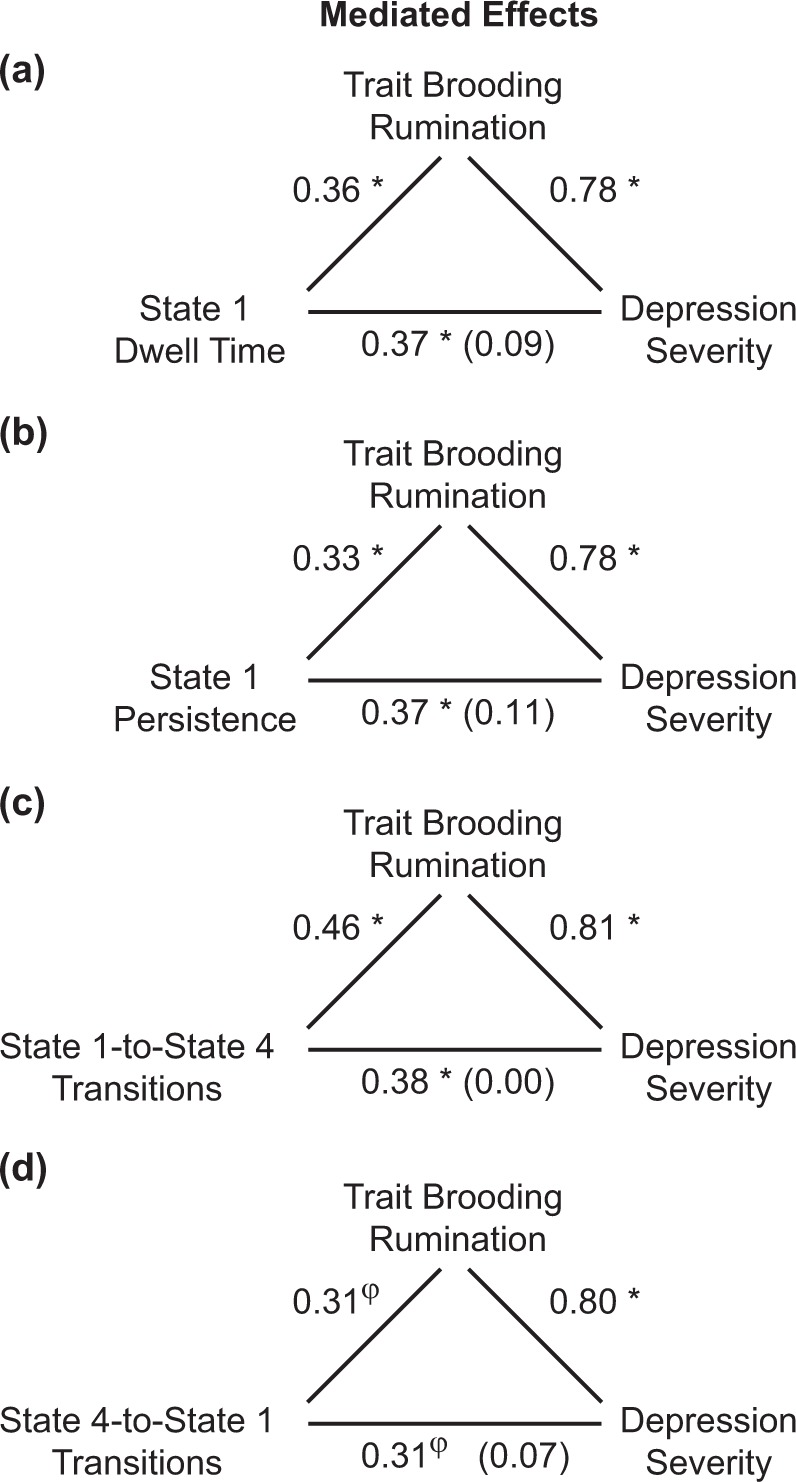Fig. 4.

Mediation models. A bootstrapping approach was used to estimate the indirect effect of network dominance (dwell time or persistence of State 1) or state-to-state transitions (transitions from State 1 to State 4, or State 4 to State 1) on depressive symptom severity (scores on the Center for Epidemiological Studies – Depression [CESD] Scale) through trait brooding rumination (scores on the Ruminative Responses Scale – Brooding [RRSB] Subscale). Mediation analyses revealed significant indirect effects of a State 1 dwell (indirect effect = 5.92, SE(boot) = 2.17, bias-corrected 95% CI: 1.96–10.61), b State 1 persistence (indirect effect = 0.0074, SE(boot) = 0.0032, bias-corrected 95% CI: 0.0017–0.0143), and c State 1-to-State 4 transitions (indirect effect = 0.07, SE(boot) = 0.02, bias-corrected 95% CI: 0.02–0.12), via trait brooding rumination on depressive symptoms. d The indirect effect of State 4-to-State 1 transitions via brooding on depressive symptoms did not reach statistical significance (indirect effect = 0.04, SE(boot) = 0.02, bias-corrected 95% CI: 0.00–0.08). Displayed are standardized path coefficients for each path of the mediation models, φp < 0.10, *p < 0.05
